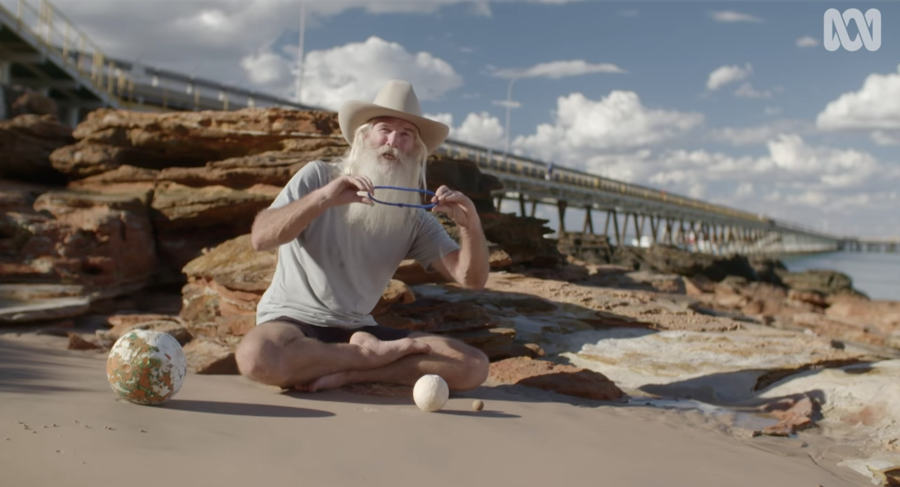How do tides work? What are spring tides, also known as King Tides? And what does the moon have to do with the rise and fall of Earth’s ocean waters? First, a quick summary from the National Ocean Service:
“Tides are long-period waves that roll around the planet as the ocean is ‘pulled’ back and forth by the gravitational pull of the moon and the sun as these bodies interact with the Earth in their monthly and yearly orbits.”
“If there were no objects around the earth exerting a gravitational pull, the water would be uniform around the Earth,” Outback astronomer Greg Quicke explains. “There would be no tides. But there are objects around the earth.”
Quicke adds a small cork moon to his buoy and rope model, visualizing the moon and our watery home world. He reshapes the rope from a circle to an oval to represent the moon’s affect on Earth’s water, a gravitational influence that creates two high and low tides daily.
Three celestial bodies can align when Quicke adds a larger buoy, the sun, creating a gravitational power that causes higher-than-average currents twice each lunar month. He elongates the oval rope’s shape. Watch the full demonstration in this Stargazing clip from ABC Science.
Fun fact: Greg Quicke was nicknamed Space Gandalf after he was seen on Stargazing Live with physicist Brian Cox.
• Moon in Motion, a NASA summary with animated visuals.
• NASA Tide Animations, available for download.
• NOAA Tides and Currents Map, a U.S.-focused online tool.
• NOAA Tide Predictions for 3000+ locations around the U.S.
Watch these handpicked videos next:
• Make your own Fabric of the Cosmos demo
• How do ocean currents work?
• Sand Bubbler Crabs make tiny sand balls
• How did Polynesian wayfinders navigate the Pacific Ocean?
Plus, don’t miss To Scale: TIME, a short film that visualizes 13.8 billion years.
Curated, kid-friendly, independently-published. Support this mission by becoming a sustaining member today.



